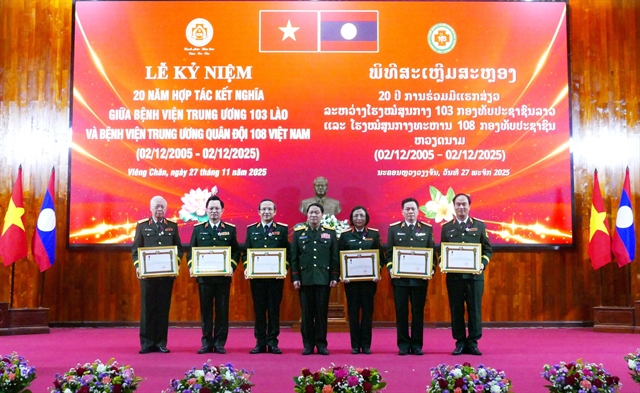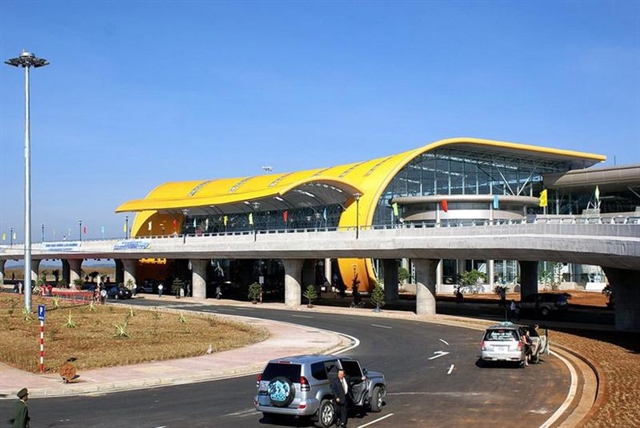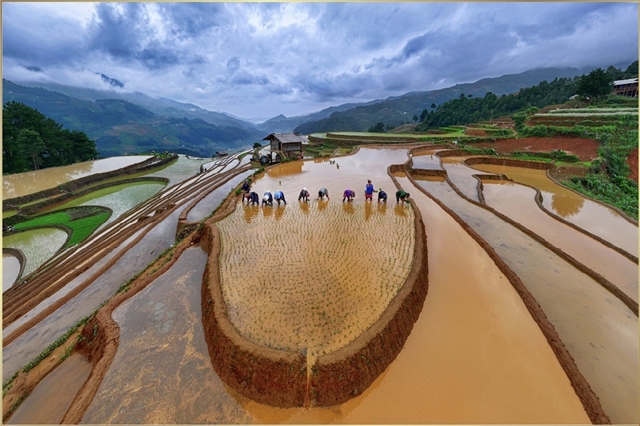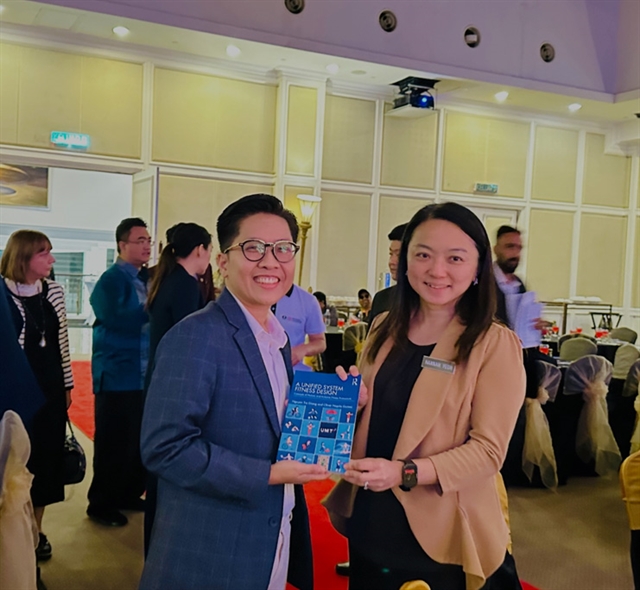 Inner Sanctum
Inner Sanctum

It’s a pity that some famous Vietnamese people going abroad prefer using clothes made outside the country. They lose the opportunity to promote Vietnamese clothing.
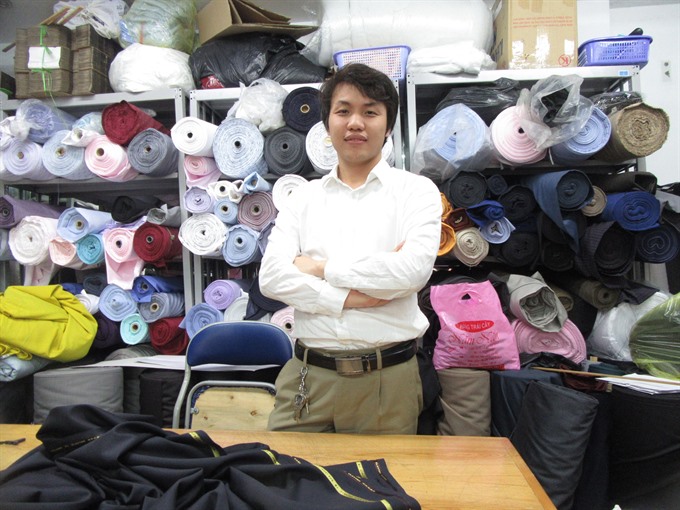 |
| Designer Duy Nguyễn.—VNS Photo Bạch Liên |
Duy Nguyễn impressed the public at the Fall-Winter Fashion Week recently with new suits that used brocade made by the H’Rê ethnic minority people from Teng Village in Quảng Ngãi Province. The 30-year-old designer feels Vietnamese fashion should preserve and promote the nation’s indigenous materials and culture. His own fashion sense is rooted in his culture, he told Vương Bạch Liên.
Inner Sanctum: Not many Vietnamese know about the Teng Village of the H’Rê people and their brocade. How did you discover it?
I didn’t know about this village and its brocaded products either. I discovered it recently thanks to designer Minh Hạnh. She was my teacher. She told me about this village. She visited Japan often for her work and discovered that many Japanese knew about this village and studied the art of brocade here before it was known to many Vietnamese people.
I was very excited to learn this. Later I accompanied her and some other young Vietnamese designers on a trip to the village.
I was amazed by the talent of the craftswomen there. They do farm work and only weave during their free time, but they are very skillful. They do not weave for business, just to make traditional clothes for festive days. So their products are not widely known.
I love using Vietnamese traditional materials for my designs and have spent a lot of time looking for Vietnamese handicraft products to use in my designs. So I was very happy to use brocade from this village for my creations.
Inner Sanctum: Last year, at the Áo dài (traditional Vietnamese dress) festival in Hà Nội , you presented 15 traditional dresses with original designs that you said were inspired by the perfume of cốm (young sticky rice flakes) of Hà Nội. You seem to be quite passionate about our culture.
I have loved eating bánh cốm (young rice flake cake) since I was a child. The Nghi Tàm area, where I was born and grew up, used to be an immense land of rice fields and flowers. Children of that time could play lot of folk games and run through spacious paddies. Since those days, I have also enjoyed the sweet fragrance of green sticky rice
Before presenting this collection to the public, I was quite nervous because some veteran designers were also participating in the festival. Luckily, the public warmly welcomed my creations. One-third of the áo dais were sold during the festival and others were sold in my shops.
I was happy that through my collection of áo dài, I could convey my sentiments, emotions and beautiful memories of childhood.
Inner Sanctum: Is designing a stressful work?
Yes. Because designers always have to create something new. There is a lot of pressure in the job. But we have to keep fighting, be patient. Because if I give up the game, I will be behind the times.
Whenever I hear about a new region where I can find Vietnamese traditional materials, I immediately note down it in my handbook and prepare my trip. If I can use them in my designs, I’ll use them immediately.
I love a book entitled Change or Die. I am aware that if I do not make enough effort to grow, I will lose all the things that I could achieve until now. It will not only affect the life of my own family members, but also the lives of the employees working in my shops.
Inner Sanctum: That’s thoughtful of you. Aren’t some of your employees students that you trained?
Yes. Over the last two years, I have organised two classes per year to help people in need learn how to design and make clothes. The classes are totally free.
My classes target students who followed design classes at school and all people living in poor provinces who want to work as a designer or tailor.
If you know someone who can use the training, please inform them about my classes. Or tell me about them. I’ll be glad to help them.
During the classes, I can find those who are skillful, and passionate with the job. And then I recruit them if they want to work in my shops.
If they want, they can also return to their native places and open a shop where they can design and make clothes.
I understand the difficulties in opening and managing a shop. I myself began with a very small budget.
Inner Sanctum: Can you tell us a bit more about how you began?
I started seven years ago. Towards the end of 2009, I borrowed VNĐ20million (US$876) from my mother to open a small shop where I designed and made suits for men. I rented a room in a small lane in Nghi Tàm Street, not far from my house. At the beginning, I had no clients, no experience, and I faced lot of hardship. But I didn’t give up. I continued to learn from other designers.
From a small shop in 2009, I now have six shops with a total of 100 employees in Hà Nội. However, I am still young and do not have much management experience, so I have to learn a lot. I recently bought a lot of new books on management skills.
Inner Sanctum: What advice would you give to young people who want to become designers?
I would tell them that designing is not a job that is about glory and fame. Behind the stage, designers work really hard and are very simple people.
I believe there are three important conditions to become a good designer: Never give up despite difficulties, accept devoting to the job, and always be passionate.
Before deciding to become designer, they should ask: why do they want to become a designer? If they only want to achieve fame, this job is not for them. They should be aware that a designer’s work is to beautify society, beautify people.
Inner Sanctum: Vietnamese designers have tried hard and worked with a lot of passion but Vietnamese fashion has not developed strongly and is not widely known abroad. Why?
The biggest challenge to the development of Vietnamese fashion is the lack of materials. We still have to import most of the materials from abroad.
Moreover, we do not have something called “the national trademark”. Why is that products made in Japan or in the US sell more easily than products made in Việt Nam?
To further promote Vietnamese fashion abroad, we should present to foreign friends what is typically Vietnamese, like our traditional materials: silk or brocade.
On the international stage, we have to present our culture and our identity.
It’s a pity that some famous Vietnamese people going abroad prefer using clothes made outside the country. They lose the opportunity to promote Vietnamese clothing. —VNS

